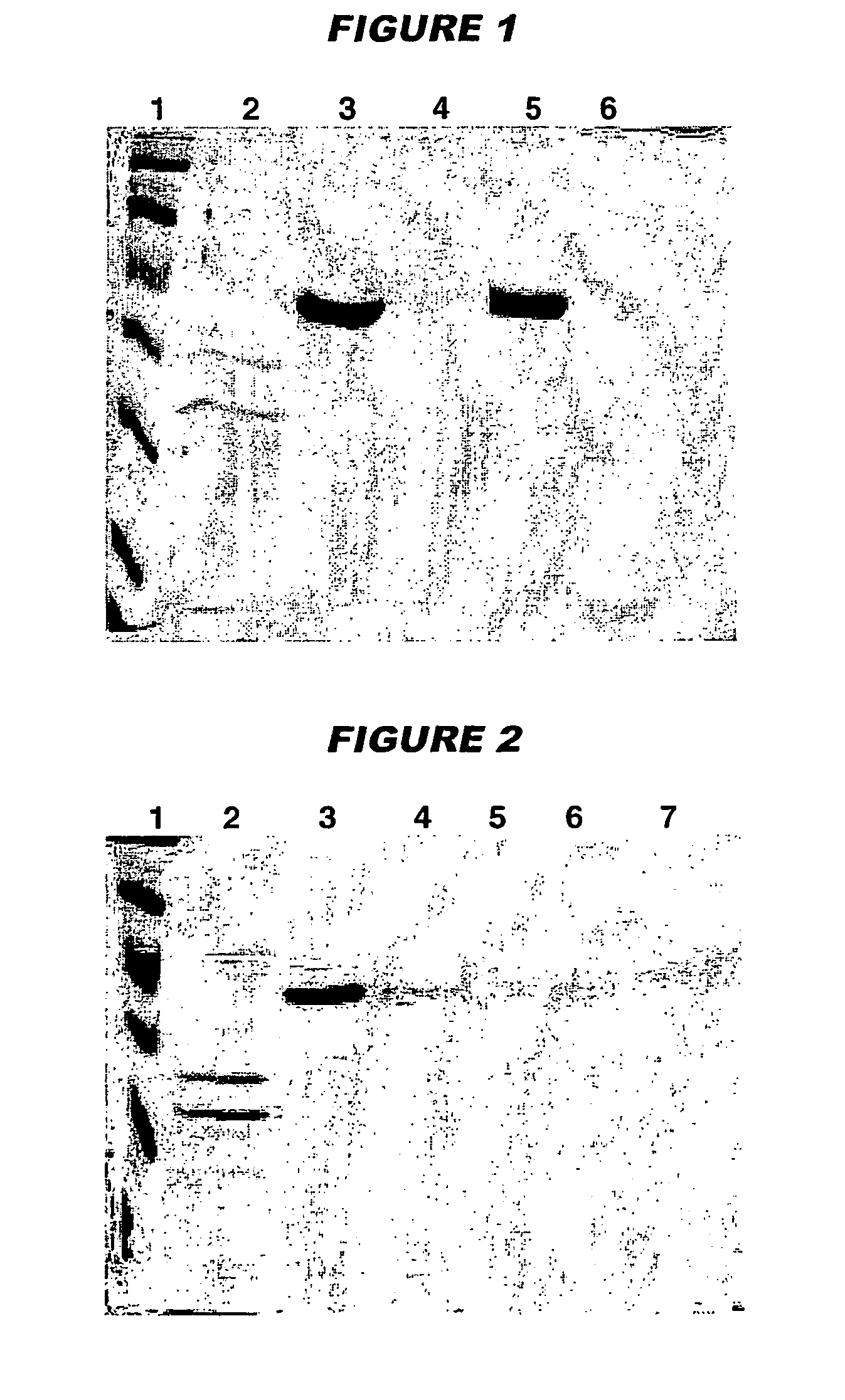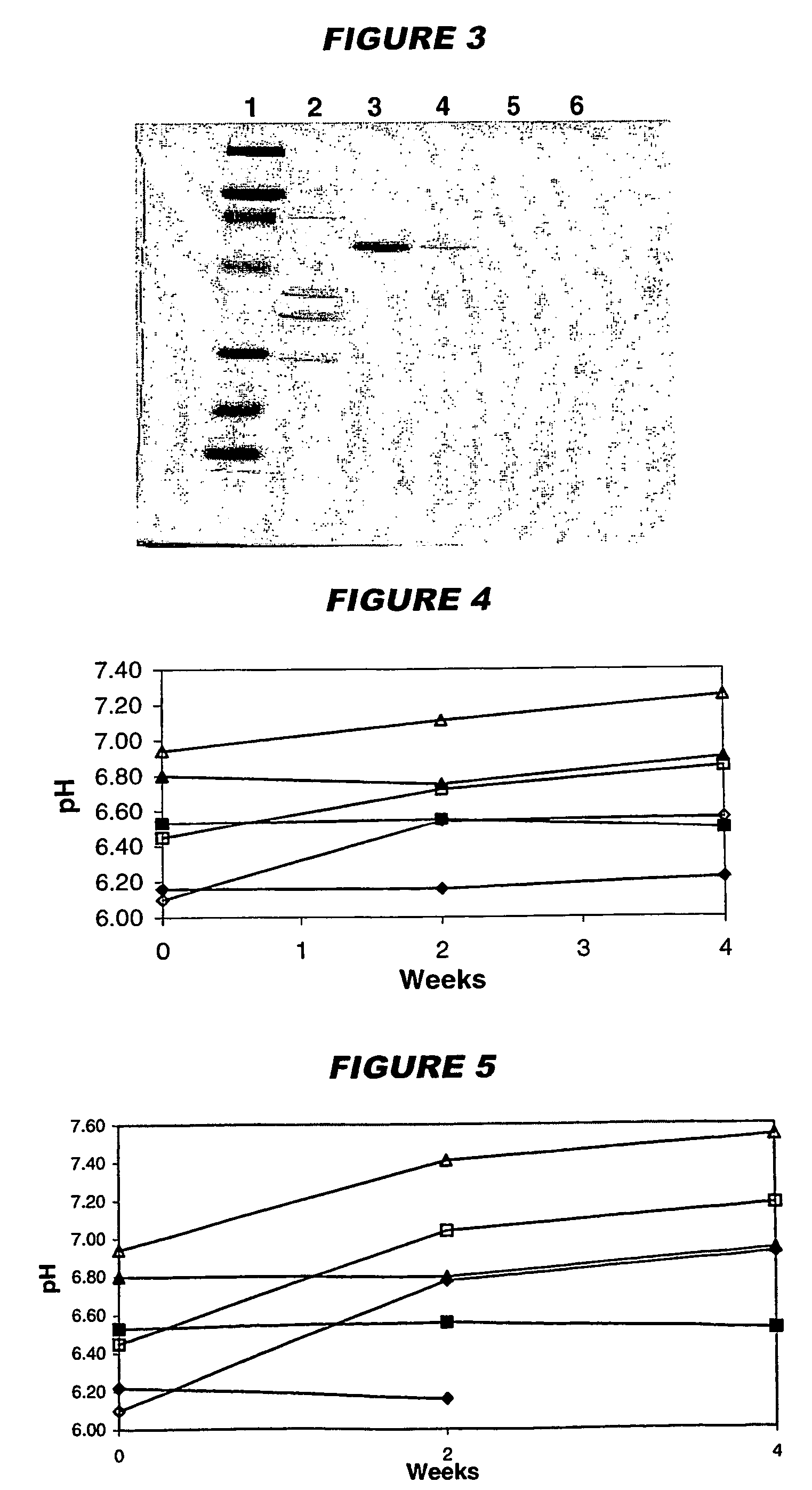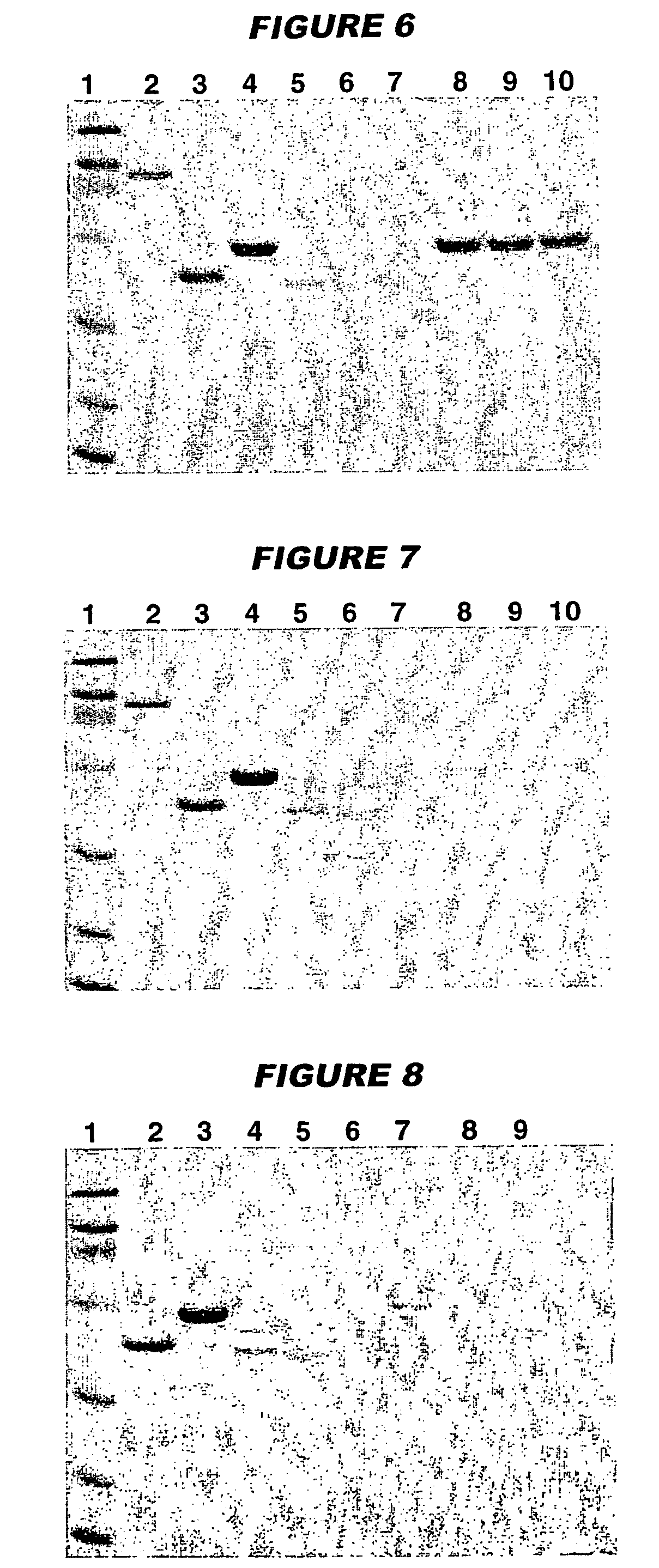Vaccines comprising aluminium adjuvants and histidine
a technology of adjuvants and adjuvants, which is applied in the field of vaccine formulations, can solve the problems of reduced efficacy, difficulty in freezing drying, and incompatibility of aluminum salts with particular antigens, and achieve the effect of reducing the adsorption of antigens and good control of ph
- Summary
- Abstract
- Description
- Claims
- Application Information
AI Technical Summary
Benefits of technology
Problems solved by technology
Method used
Image
Examples
example 1
pH Stability and Adsorption of Menigococcal B ‘287’ Antigen
[0109]Reference 11 discloses a protein antigen named ‘287’ from N. meningitidis serogroup B. Reference 90 discloses a form of this antigen (‘ΔG287’) which is truncated to remove the N-terminal amino acids up to and including its hexaglycine region. 287 and ΔG287 are both able to elicit a protective immune response in mice. References 16 to 19 disclose OMV antigens from N. meningitidis serogroup B. These OMVs are also able to elicit a protective immune response in mice.
[0110]These two antigens were formulated by adsorption to aluminium oxyhydroxide adjuvant. Two adjuvant concentrations (1 mg / ml and 3.3 mg / ml) were tested.
[0111]Immunisation studies in mice showed that vaccine immunogenicity is linked to the level of adsorption of the antigens to the adjuvant. To assess adsorption levels, samples of the final formulations were centrifuged at 1300 rpm for 10 minutes and the supernatant was analysed by SDS-PAGE in order to detect...
example 2
Adsorption of Meningococcal C Saccharide Antigen
[0120]Saccharide conjugates tend to degrade by hydrolysis [7,8] when present in solution (‘liquid’ vaccines). Conjugates can be lyophilised to avoid this [7], but this requires adjuvant to be added at the point of reconstitution. It would be preferable to have a liquid form of the vaccine in which the saccharide is not subject to hydrolytic degradation.
[0121]This was investigated for a conjugate of meningococcus serogroup C oligosaccharide on CRM197 carrier protein [20]. CRM197 is acidic and thus does not completely adsorb to negatively charged aluminium phosphates. Histidine, however, is positively charged and it was thought that this might be able to mask the negative charge. Histidine buffer was thus tested with the aim of improving adsorption of MenC-CRM197 to aluminium hydroxyphosphate.
[0122]Antigen adsorption was evaluated in the presence and absence of histidine buffer by measuring protein concentration in the vaccine supernatan...
example 3
Adsorption of Meningococcal B NadA Antigen
[0126]NadA (Neisserial adhesin A) from serogroup B N. meningitidis is disclosed as protein ‘961’ in ref. 11 (SEQ IDs 2943 & 2944) and as ‘NMB1994’ in ref. 13 (see also GenBank accession numbers 11352904 & 7227256). Allelic forms of NadA are disclosed in reference 91. Preferred forms of NadA lack the C-terminus anchor domain (‘961c’).
[0127]961c (100 μg / ml) was adsorbed onto aluminium oxyhydroxide (3 mg / ml) in the presence of 10 mM histidine buffer, pH 6.5. After 4 weeks of storage at either 2-8° C. or at 36-38° C., the antigen remained 100% adsorbed (FIGS. 8 & 9, lane 6). The pH of the composition was 6.44 at time zero and after 4 weeks of storage rose very slightly to 6.48 (2-8° C.) or 6.47 (36-38° C.).
PUM
| Property | Measurement | Unit |
|---|---|---|
| concentration | aaaaa | aaaaa |
| molar ratio | aaaaa | aaaaa |
| molar ratio | aaaaa | aaaaa |
Abstract
Description
Claims
Application Information
 Login to View More
Login to View More - R&D
- Intellectual Property
- Life Sciences
- Materials
- Tech Scout
- Unparalleled Data Quality
- Higher Quality Content
- 60% Fewer Hallucinations
Browse by: Latest US Patents, China's latest patents, Technical Efficacy Thesaurus, Application Domain, Technology Topic, Popular Technical Reports.
© 2025 PatSnap. All rights reserved.Legal|Privacy policy|Modern Slavery Act Transparency Statement|Sitemap|About US| Contact US: help@patsnap.com



